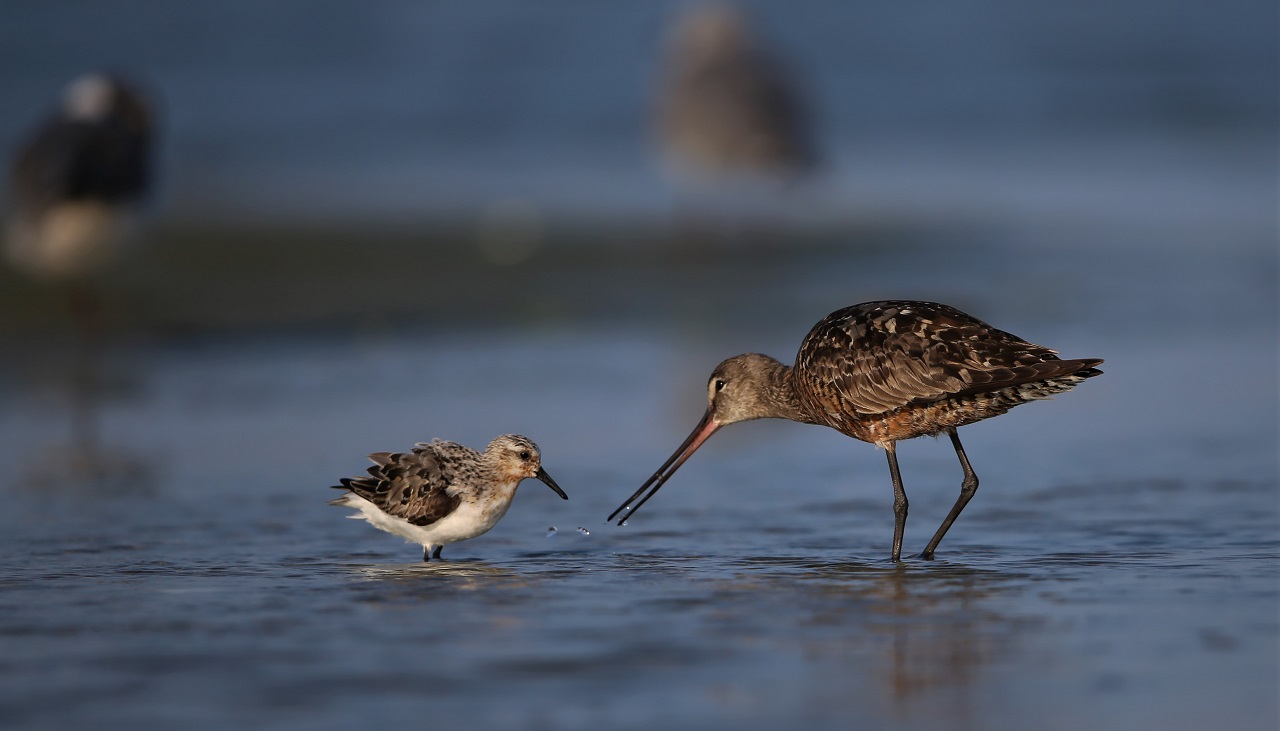Safeguarding the health of birds
Manomet is best known for its work on avian species and is arguably the world leader in shorebird conservation. We are working to grow the impact of this work through enhanced monitoring, expansion of on-the-ground site conservation, a strong focus on working lands and seas, and enhanced partnerships.
Many shorebird species use habitats across a vast geography, undertaking some of the longest migrations in the animal kingdom. They are also one of the bird groups undergoing the steepest declines. The total geographic area used by a species or population during its annual lifecycle is termed a flyway. Within each flyway, shorebirds tend to concentrate at just a few sites that provide safe foraging and resting habitat.
For more than 50 years, we have used science and collaboration to identify critical sites for shorebirds and promote their protection and effective management, while supporting the coordination of research and conservation efforts across political boundaries.

Sanderling and Hudsonian Godwit. Credit: Brad Winn.
Strengthening flyways through:
Monitoring.
Increased monitoring of all shorebirds will better inform priority locations for site conservation work. Based on our long-term data on critical shorebird stopovers, we have identified the most important sites to focus on in the coming years. Given the current trends in habitat loss, we need to understand how every shorebird species uses habitat to prioritize future conservation efforts. We will grow our monitoring to develop a full picture of species at risk, including the many species about which we know very little.
Protecting sites.
Partnerships are key to achieving shared conservation and sustainable development goals. Manomet staff helps partners maintain and increase engagement to promote effective conservation measures at the highest priority sites for shorebirds in the hemisphere. Nested within our work is an effort to maintain productivity of working lands for local stakeholders while enhancing shorebird conservation. These efforts include working with ranchers, shrimp farmers, and salt producers to manage their lands to benefit shorebirds and other wildlife.
Expanding shorebird habitat.
Manomet hosts the Executive Office of the Western Hemisphere Shorebird Reserve Network (WHSRN), a partnership-driven conservation initiative for protecting critical habitats for shorebirds throughout the Americas. Manomet staff provides WHSRN site partners with training and expertise in conservation planning, good governance, community engagement, ecosystem service assessment, habitat management, shorebird monitoring, and fundraising. By focusing on the best available information, including traditional and local ecological knowledge, we will add over a dozen new WHSRN sites of critical importance to shorebirds.
Restoring shorebird populations.
The conservation of migratory species requires coordinated action across borders and throughout their lifecycles. Manomet has been at the forefront of national and flyway-scale efforts to conserve shorebirds for more than 30 years. We are leaders in the Arctic Migratory Birds Initiative, the Convention on Migratory Species, and the Atlantic, Midcontinent, and Pacific Shorebird Initiatives. By developing national plans within the framework of these broader initiatives, we will continue to ensure connections between local and global actions and address global drivers of threats to shorebird populations.




